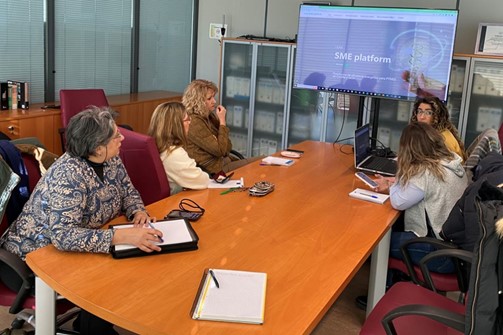
Launch of Castilla y León’s Lean SME Platform
Monitoring meetings of the Castilla y León Action Plan implementation.
SMEs form the backbone of the economy, however, their potential for energy efficiency and renewable energy use remains untapped. The huge number of SMEs operating across the EU means that a change in their energy behaviour is an essential part of the shift to a low carbon economy. The specific target of SME POWER are non-energy intensive SMEs: a silent majority that does not yet recognise the benefits of committing to this shift.
SME POWER’s overall aim is to ensure that public policy for the low carbon economy is better adapted to the needs of non-energy intensive SMEs, thus enabling them to be a key driver in the low carbon shift at European level.
A driver thanks to improved energy conditions in their buildings and processes. A driver thanks to their role as a multiplier when developing more energy efficient products. A driver thanks to the positive examples set for workers when investing in capacity building measures. These 3 drivers for change are at the core of the SME POWER learning activities.
As European policy makers approach the complex world of support for low carbon SMEs from different angles, interregional cooperation is key to identifying good practices that can be integrated, merged and adapted.
SME POWER’s partnership gathers complementary experiences and builds on a shared vision. Policy support must be designed with a synergic approach, promoting measures that target all the drivers for change.
SME POWER groups 7 policy partners, improving 5 ERDF and 1 national policy instruments and it welcomes 1 Advisory Partner.
Thanks to the design and implementation of an Action Plan for policy improvement, SME POWER achieves reduced emissions and increased use of renewables in non-energy intensive SMEs. SME POWER places itself at the centre of a shift from support to low carbon public sector towards the private sector. If supported by effective policies, as encouraged by SME POWER, SMEs can become a driver to reaching the ambitious EU 2030 energy targets.
€1,416,068.00
Low-carbon economy
In Tuscany, Priority Axis 4 of the ROP focuses on energy efficiency and renewables in key sectors, such as industry and transport, to achieve the Europe 20-20-20 targets. Through a sub measures of this axis, the Regional Government supports actions to reduce primary energy consumption and emissions, giving priority to high efficiency technologies.
Investment priority 4b focuses on promoting energy efficiency and renewable use in SMEs, with two types of intervention. The first is energy efficiency in buildings, such as thermal insulation, cogeneration plants, automation and intelligent systems. Thermal and electric energy interventions can be activated from renewable energy sources.
The second concerns energy efficiency in productive process with a focus on decreasing energy consumption and saving energy (recovery heat, change plants, automation and regulation production plants, etc.).
Expected results are energy savings in SME structures and in production cycles, increased use of renewable energy sources and (res) use for self-consumption. Beneficiaries of the calls are enterprises.
In terms of improvement needed, selection criteria should be refined to guarantee that only high quality projects are funded. An additional focus could be shifted towards interventions on productive processes and monitoring of approved projects should be enhanced. Integrated communication modalities targeting non-energy intensive SMEs should be improved.
The Slovenian Operational Programme encompasses 11 thematic objectives and corresponding investment priorities. With SME POWER, LEASP focuses on Priority Axis (PA) 4: Sustainable consumption and production of energy and smart grids. PA 4 is designed to promote actions to improve energy efficiency (EE) and use of renewable energy sources (RES) in the public sector, the household sector and in enterprises in all areas of Slovenia.
Through support granted to beneficiates, total energy renovated heating space and the use of RES in total energy consumption will increase and help to reduce Greenhouse gases by 45% in all sectors (excluding transport).
Before the end of the period 2014-2020, yearly calls for improving energy efficiency in public sector and measures to increase the share of RES in end-user energy consumption (all sectors) are foreseen. The overall budget of PA 4 amounted to 361.637.662€ and in spring 2018 only 154.503.816€ had been allocated.
At present, there are many supported initiatives for EE measures and switching from fossil fuels to RES in public sector and households. There are no initiatives as such for SMEs. This is the reason why is crucial to shift the focus of the measures towards industrial building refurbishment to increase EE and RES, and to raise capacity building and awareness within SMEs on the topic. This will bring Slovenia closer to its goal to achieve at least 25% share of RES by 2020 and decrease energy consumption.
The North East LEP area European Structural and Investment Fund 2014 – 2020 has a specific priority axis (4b) promoting energy efficiency and renewable energy use in enterprises. The total budget for Durham for Priority Axis 4 (PA4) is £18.3M, which covers PA4 a,b,c,e and f.
The main target group of the priority axis 4b is SMEs. At present, a minimum 12 hours’ support or a minimum grant of £1000 is required to compliantly assist an SME. Actions supported include:
-Support to businesses to undertake green diagnostics or audits
-Investing in energy efficiency measures, processes and renewable generation capacity
-increased SME access to government procured contracts for energy efficient goods and services
-Developing low carbon innovation for energy efficiency
-Building retrofit and energy efficiency measures
To date, only Durham's Business Energy Efficiency Programme (BEEP - worth £533,887) has been approved on priority 4b. There is still £12.8M available across PA4.
Through the BEEP project, DCC identified that the majority of small and micro SMEs do not require the full 12 hours of support to receive in-depth and comprehensive energy reduction advice. A project like BEEP could provide significant benefits to these businesses if the PA allowed it.
There is a need for more flexibility to work with smaller SMEs, which are often the ones most in need of energy efficiencies, which lack knowledge and capacity to lower high energy bills, and would need a more tailored approach.
The policy instrument tackled is the ERDF Operational Programme Castilla y León, specifically Investment Priority 4.2. Promoting energy efficiency and use of renewable energies by companies. Priority 4.2 supports investments in best available technologies, within two specific sub objectives:
4.2.1. to advance in the evaluation and improvement of company energy efficiency, in particular SME
4.2.2. Foster the use of renewable energies in companies, especially in SMEs.
The expected impact is a decrease on energy intensity and, therefore, a diminution of the energy dependency in the Castilla y León region. In the next years, specific actions should be developed to increase the share of energy management systems in SMEs, as well as the promotion of investments by energy saving companies. This will be achieved within the framework of the Energy Efficiency Strategy of Castilla y León 2020, approved at the beginning of 2018.
The beneficiaries of the calls for proposals within Priority 4.2 are companies with headquarters in Castilla y León. Calls for proposals are expected to be launched in 2019 and 2020, to support energy efficiency and renewable energies in SMEs (1M€ each year).
The policy could be improved with a stronger link to innovations that concern companies, particularly digitalisation. Moreover, it is necessary to increase energy audits among SMEs, focus grants towards sectors with greater saving potential and develop better support tools.
The selected policy instrument, the Better Energy Community (BEC) Initiative, supports wide-ranging community initiatives, including SME participation, for low carbon economy. This policy instrument, managed by SME POWER Partner 6 - SEAI, is delivered through approved Regional Community Based Organisations (CBOs).
BEC is the national retrofit initiative with grant support of up to €28 million each year. It supports new approaches to achieving energy efficiency in Irish communities: upgrades can take place across building types to reduce energy use and costs. The policy aims to deliver energy savings to homeowners, communities, enterprises. All projects are community oriented, with a cross-sectoral approach.
BEC supports project that show a mix of sustainable solutions, community benefits, justified energy saving and a clear and ambitious roadmap. Measures supported include a mix of:
-Building Fabric Upgrades
-Technology and System upgrades
-Integration of Control Systems
-Integration of renewable energy sources
-Domestic Combined Fabric Upgrade
Community engagement, including SMEs, has not been at desired level. SEAI wishes to review why this may be the case. SME POWER feeds into significant programme changes which it is hoped will improve participation of SMEs in projects.
Furthermore, a single national policy might not be the most effective instrument to achieve this. SME POWER could help SEAI cooperate with the regional level that at present does not fund these measures.
The policy instrument addressed by SME POWER is the ERDF Sustainable growth and jobs 2014 – 2020 programme. Specific focus is on Priority Axis 2. Producing and using the latest information and knowledge, which includes a measure on developing solutions based on renewable energy and energy-efficiency.
As a result of R,D&I projects funded in this measure, it is possible to increase the share of renewable energy sources in energy production, develop renewable energy, energy-efficient and material-efficient solutions and promote business competitiveness. The measure provides funding to promote the business environment, rather than funding SMEs directly. It promote competitiveness and efficiency of the whole supply, production and distribution chain. In particular, opportunities for new energy services, rural business and decentralised energy production solutions are opened. Every year 1.8 Mio € are available and additional calls are expected in 2019 and 2020.
Furthermore, in Finland a total of 25% of all ERDF funding is directed at low-carbon activities. This is because a low-carbon society can only become reality if there are structural changes, new operating approaches and models, product development, investments and development of multi-sectoral expertise.
Heinola needs more synergic measures to fund proposals on R&D&I activities or quadruple helix cooperation that improve energy efficiency not only in single SMEs, but in SMEs of the entire regional value chain.

Monitoring meetings of the Castilla y León Action Plan implementation.

Read the full article on the progress of the SME POWER consortium on the local, regional and national levels in this second stage of project activities.
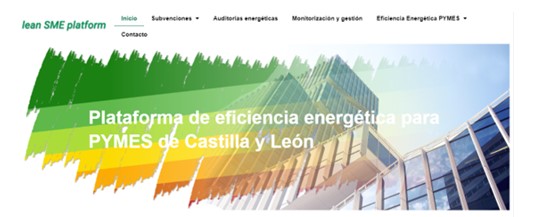
EREN to launch their new lean SME platform for the promotion of energy efficiency projects in SMEs in Castilla y León, Spain.

On October 3rd, 2022, the EU Commission approved the Regional Programme of the European Regional Development Fund (ERDF) 2021 - 2027 of the Tuscany Region.
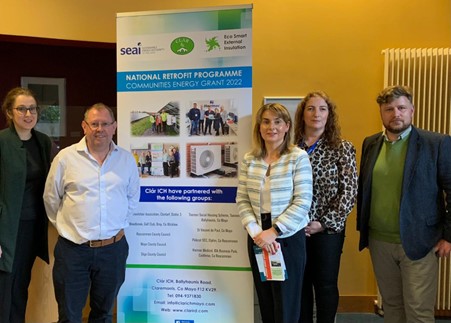
A pilot regional engagement campaign with SMEs was organised in Castlebar, Ireland on 1st June 2022 to inspire SMEs to become ambassadors.
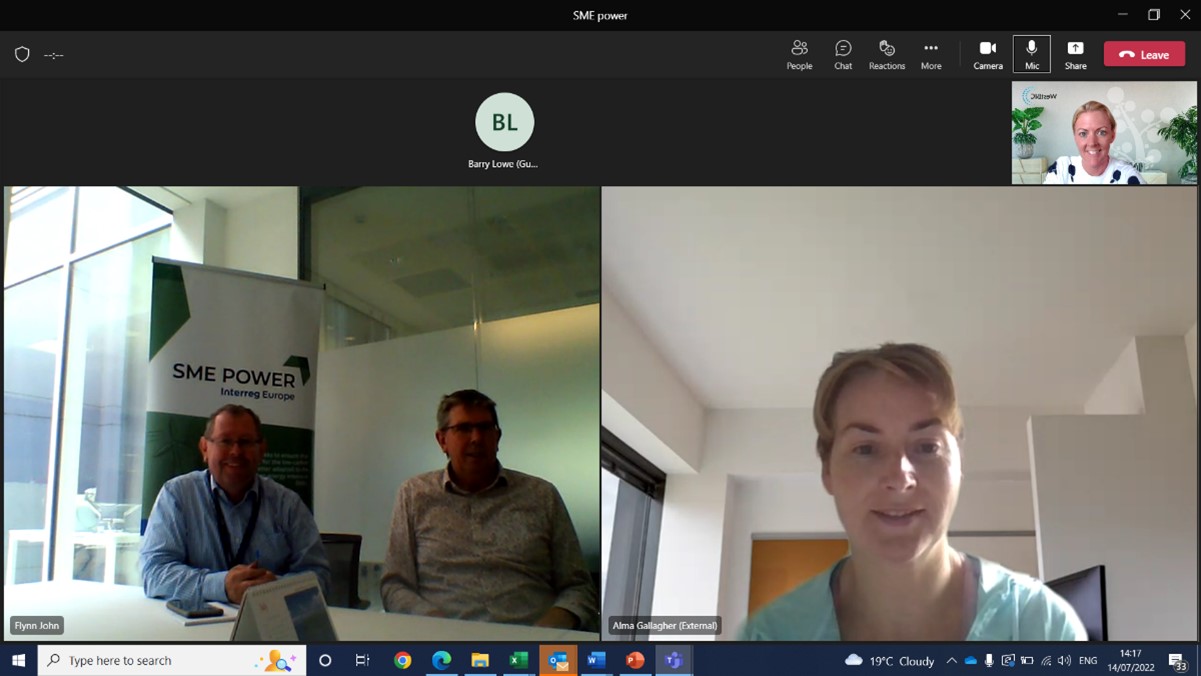
The sixth meeting of the Irish Stakeholders’ Group for the Interreg Europe SME POWER project, which was held in SEAI Head Office, Dublin and virtually.
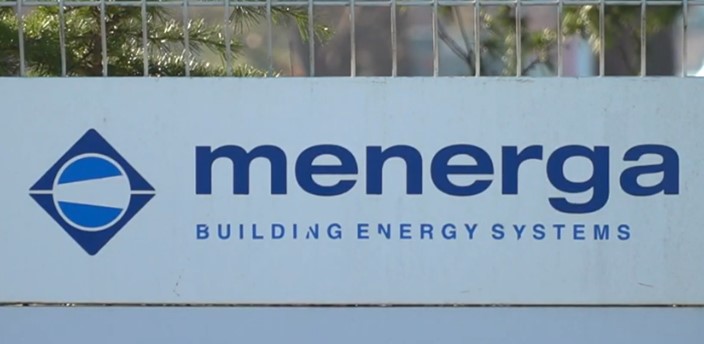
During the SME POWER Interregional Event this January, attendees received a virtual study visit on MENERGA, a high-tech engineering company.

The second SME POWER e-newsletter is now finalised and available for download.
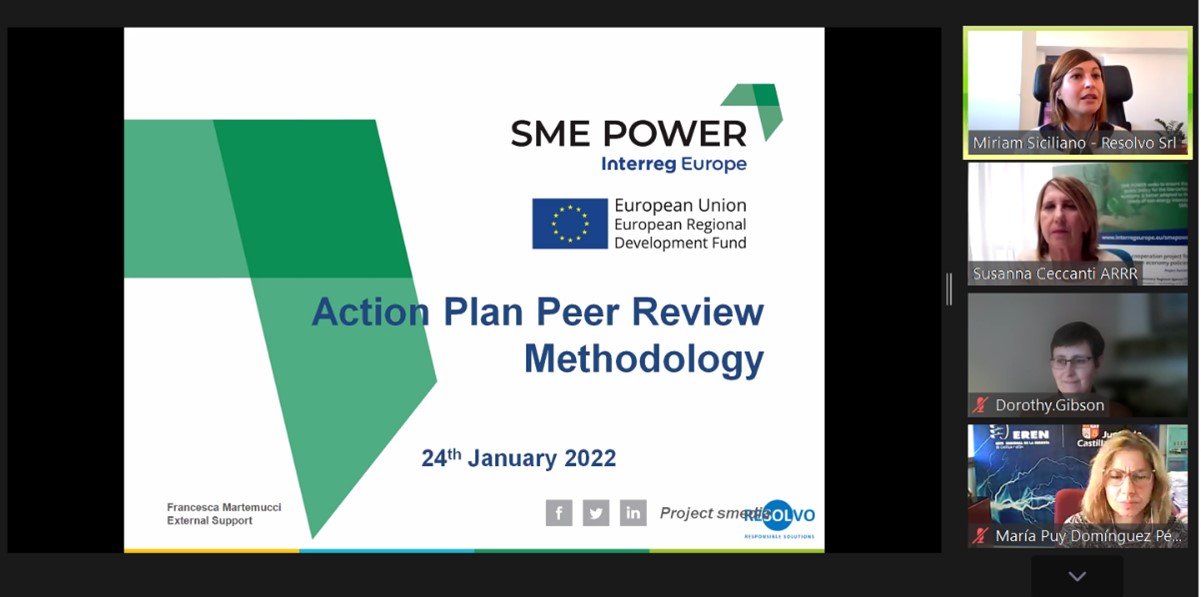
Action Plans Peer Review of the international consortium, hosted as a two-part event.

The 5th Irish Stakeholders Group Meeting for the SME POWER Interreg Europe project was held virtually on 31st January 2022.